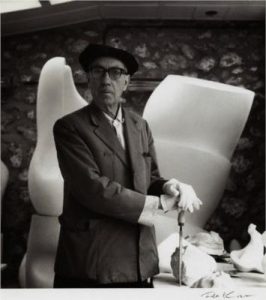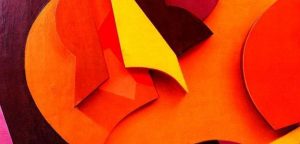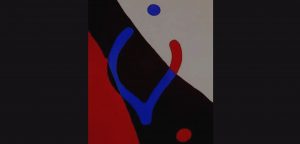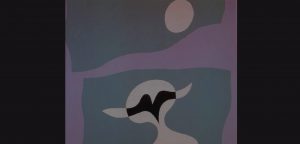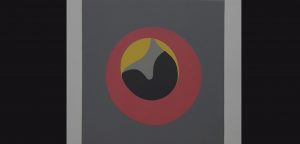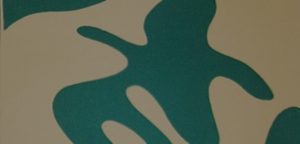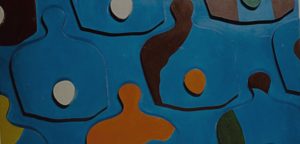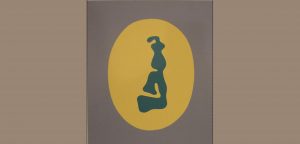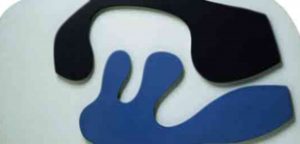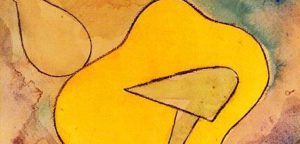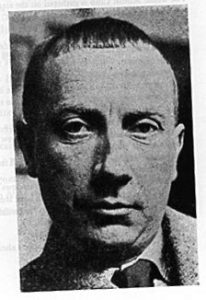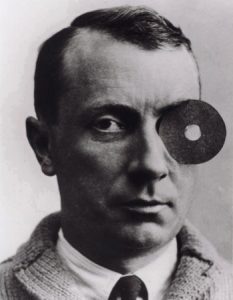Jean Arp was born on the 16th of September in 1886. Strasbourg in German Empire.
1886 - 1966
Jean Arp

description
An outstanding German artist, sculptor, designer and poet.
His father was a German man from Kiel and his mother was from Alsace. His restless nature, the propensity to move, according to Arp, was predetermined – he called himself Jean, when he spoke in French, and Hans, when he switched to German.
He was a founding member and participant of many avant-garde groups in Zurich, Munich, Berlin, Cologne, Paris. Cavalier of the main orders of France in the field of culture, winner of many prestigious awards. A large collection of works is presented at the Museum of New and Contemporary Art in Strasbourg, situated on the square of H. Arp. The cultural center in Clamart, a street in Paris. is named after the artist. The Foundation of Arp in Bonn received the status of a national museum in 2004.
Key ideas:
– Hans Arp saw an eventuality as a co-author of the process of work, considered it a part of his work. Therefore, he often did not conceive the plot, did not name his paintings, waiting for the final result. In this way, he sought to minimize the interference and control of the conscious over the mystery of fine art.
– Arp made his early collages «in a branded way»: he tore a paper into squares and threw them from the top of a staircase. He could always have a chance that they would fall on the background in a way that would make a harmonious composition. Even is Arp was not ready to fully refuse from the control of the process, the idea was incredibly radical and demonstrated his adherence to the ideas of chaos that was the hallmark of the Dada movement.
– The abstract compositions of Arp offer a viewer such organic forms that make him curious. For instance, in a painting with two objects, one (fork) is recognized immediately and provides an understanding that the second one is a shirt, although, the objects can be understood in any way. Together they are presented as a consensual structure, harmonious, according to the author, for the viewer’s eyes due to the tranquil combination of colors. In general, throughout his career, Arp preferred a soft palette. In 1955, he determined his color preferences: «most of all, black, white and gray».
– The works of Arpa have a clear graphic quality – this mostly concerns collages, although few scenic storyboards are characterised by a clear contour and flatness of an image.
– At the turn of the 1930s, the artist created the series «Constellations» (literally – a constellation, and, more broadly, a mutual arrangement, interaction). In these compositions, there are soft, smoothly rounded forms, similar to biologic tissue or microorganisms that grow, dissipating in space. The painting «Configuration with two dangerous dots» shows that the author pays more attention to achieving an ideal structural balance. The composition consists of floating drops with gentle curves and demonstrates a clear feeling of the game of forms, and the descriptional name is not deprived of humor, as it is unclear, where these so-called dangerous dots are. Sometimes the avant-garde artist introduces wood texture in the neighborhood with incorporeal forms, and it becomes an element that emphasizes the phantasm of the otherworldly shadows floating in the void.
– Sculptures of this period are also round and biomorphic – they stretch upward, then swell, then fall down powerlessly shrinking. It seems that each of them has its own life, what is especially impressive, because the author depicts only parts – legs or a head, a twig without a tree, a leaf. Arp many times claimed that art is a form of manifestation of nature. His Dadaistic abstraction is an image of the vital processes of birth, growth and development, death and rebirth.
1886
1904
1909 - 1912
1914
1918
1924
1929
1940
1946
1950
1961
1966
The birth of the artist
He began to study at the Strasbourg School of Arts and Crafts
He began to study at the Strasbourg School of Arts and Crafts, then at the Academy of Fine Arts in Weimar and at the Julien Academy in Paris (graduated in 1911).
Lived in Switzerland
Lived in Switzerland, became a co-founder of the “Modern Union” (an avant-garde group of Bernese artists). In Munich, he met W. Kandinsky, worked on the almanac of Expressionists “The Blue Horseman”. Began to publish his poems.
Created his first abstract works
Fleeing from the horrors of World War I, moved to Zurich; became one of the pioneers of Dada. Illustrated the books of his comrades – T. Tzara, B. Perret, R. Hülsenbeck; participated in the meetings of the Dadaists at the “Voltaire’s Cabaret” (Zurich). Created his first abstract works.
Married Sophie Toyber
Found his like-minded people in Berlin – Hanna Hoek, Raul Hausmann, Kurt Schwitters, El Lissitzky, Serge Charchoune, who joined the movement of Dada; in Cologne met M. Ernst and joined there in the group Dada. Married Sophie Toyber, with whom he worked until her death in 1942.
Moved to Paris
Moved to Paris, where the group of Dadaists was very active. Got acquainted with Apollinaire, Picasso, Modigliani, S. and R. Delone, Jacob. He became a member of Mondrian’s group “Style”. His works appeared at the first Surrealist exhibition at the Pierre Gallery near Chirico, Ernst, Klee and J. Miro and began to enjoy commercial success. He became a supporter of Surrealism, was close to abstract art; settled with his wife in the city of Clamart at the border of the Medon forests.
Sculptures are included in two major exhibitions at the Museum of Modern Art in New York
Received an order for a redesign of the interior of the historical dance hall Aubette (re-opened in 2006, the hall was named “Sistine Chapel of Abstract Art”). He worked with his wife. Wrote a script for H. Richter’s film «A day as a day» (one of the roles was played by S. Eisenstein), became a member of Abstraction-Création. Started working on the series “Torn papers”. Sculptures are included in two major exhibitions at the Museum of Modern Art in New York.
The death of his wife plunged Arp into a deep depression for several years
Left Paris in connection with the occupation, lived in Grasse, the south of France, and in Switzerland. There was a tragedy: Sophie died of carbon monoxide. The death of his wife plunged Arp into a deep depression for several years.
Continued experiments in plastic art
Lived in Meudon, continued experiments in plastic art, created trellises. He closely associated with Margarita Hagenbach and held his personal exhibition in New York (1949). V. Gropius organized an order for a large-scale relief for Harvard University.
Created monumental works
Created monumental works at the Universities of Caracas (Venezuela, “Shepherds of the Clouds”) and Braunschweig, an elegant bronze relief for the Parisian headquarters of UNESCO; participated in the International Biennale in Venice (1954), received a prestigious award for sculpture in La Biennale di Venezia (1956). A large retrospective exhibition of his works was held at the Museum of Modern Art in New York (1958). He received the Order of the Honorary Legion (1959). Married M. Hagenbach (1959).
He received the Gold Medal of the Ministry of Culture of Italy
Became a Knight of the Order of Literature and Art. A triumphal presentation of his works was held at the National Museum of Modern Art in Paris (1962). The artist was awarded the Great National Art Award of France (1963), the Great Northern Rhine Westphalia Artistic Prize and the Carnegie Prize (1964). He received the Gold Medal of the Ministry of Culture of Italy, the Goethe Prize of the University of Hamburg (1965).
The death
The artist died on the 7th of June in 1966 in Basel, Switzerland.

